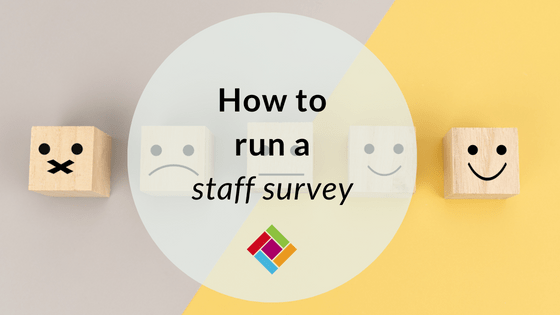
Conducting employee surveys allow you to get a better understanding of how your staff feel about working for your organisation. With the right staff survey questions, and when implemented correctly and followed up with visible actions, they can help boost morale and in turn your organisation’s productivity. So, let’s take a look how to run a staff survey.
Staff surveys can re-engage existing employees and reduce recruitment costs.
Keeping hold of existing talent is essential and understanding staff perspective is a good way to do this, rather than relying on anecdotal feedback. This is particularly important in a workplace where the business may have grown substantially over a short period of time, and staff may feel out of touch with the original company ethos.
Why is an employee engagement survey important?
- Highlight areas needing improvement: there is no better way of understanding where the gaps in your HR and people management processes lie than asking employees directly. Staff satisfaction surveys can demonstrate where improvements need to be made, and where the focus needs to be directed. Some small changes can have a huge impact on employee effort. They can also identify the things that make working at the company unique and positive. This can help drive recruitment and culture policies and documents (as well as job advertisements).
- Boost morale: soliciting feedback from staff has been shown to increase engagement and improve morale – and can help to provide an action plan for optimising HR processes in the future. For one of our clients, Scitech, staff reported feeling appreciated, listened to and more motivated following its staff survey.
- Demonstrate management’s commitment to staff: once potential improvement areas have been identified, communicate these to staff and involve them in implementing these changes. Getting staff to own part of the action plan demonstrates you trust them and that you are serious about making improvements to their work.
- Promotes your business as a good place to work: this not only helps with the retention of existing employees but makes your organisation more attractive to the recruitment market and possibly even potential customers. Following its internal survey and action plan, Scitech went on to win a ‘best employer’ industry award which has gone on to drive new business leads.
What should be included in a staff survey?
The advantage of running an employee satisfaction survey is that you can address several topics in one go. Ideally, you should look to measure employee morale, staff satisfaction and career aspirations. You can also look to discover more about benefits, well-being programmes, line management and working environment/company culture.
Typical staff survey questions include:
- How would you rate your overall well-being?
- Would you recommend this workplace to your friends and family?
- Do you know who you should speak to if you have any workplace concerns?
- How could team communication be improved?
How to get the most from staff surveys
To get a well-rounded picture you need to ensure buy-in from the entire team. When considering how to run a staff survey, think about:
- Making the survey anonymous and confidential. This allows employees to be honest and open when expressing their opinions.
- Ensure questions are clear and concise to avoid any confusion or misinterpretation.
- Decide whether you want closed or open-ended responses (do you want employees to elaborate on their answers or answer with yes / no?)
- Run consistent surveys. Ideally plan to run a survey at periodic points during the year so that you can compare results. This means keeping the questions the same / along the same lines.
- Follow up and action any findings. Staff surveys are only powerful when staff sees the value. Communicate the findings with staff and make sure that all actions are followed up.
What next?
Follow these steps when setting up a staff survey / staff satisfaction surveys:
- Define what it is you are measuring, or is it more than one thing?
- Decide how this will be measured (i.e. scores out of 10, what does good or bad look like?)
- Identify a platform to run the survey. You can design and set up your own staff surveys using tools like Typeform or use an external provider like WeThrive which will help you to get the most from it and interpret the results accurately.
- Analyse and communicate the results with employees. Present them back to them along with actions that have come as a result.
- Follow up on actions and make a commitment to this.
- Continue to monitor and refine to determine whether the actions have had an impact on overall morale.
For more support and advice on setting up a staff survey or motivating your team from our experienced HR Consultants, please take a look at how to work with Bespoke HR here.